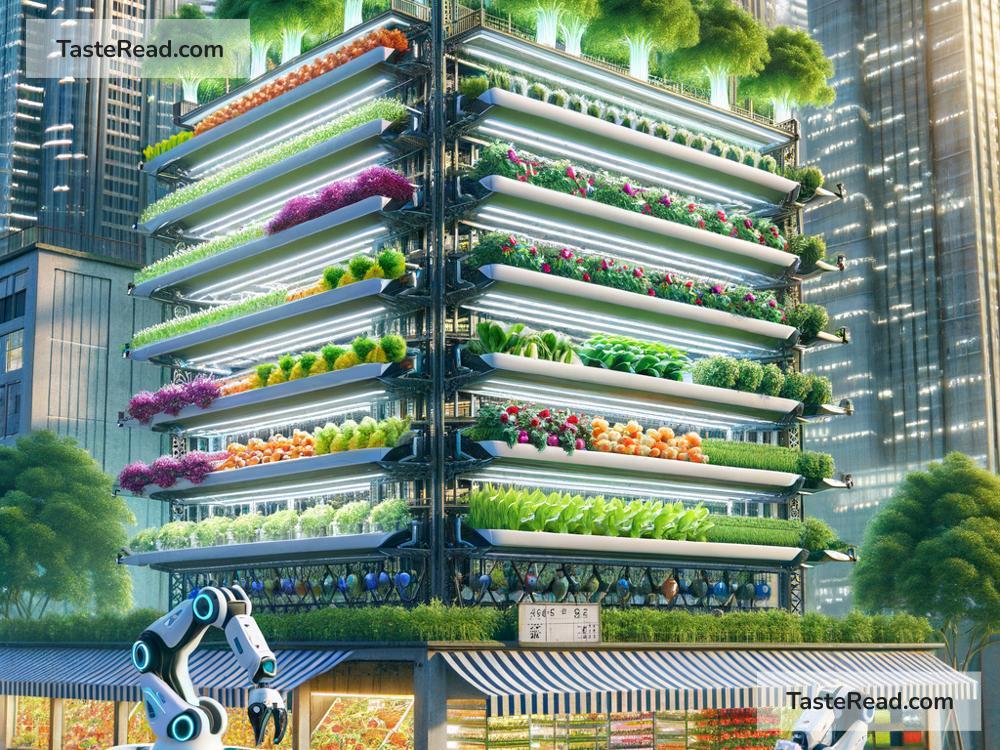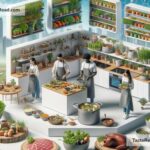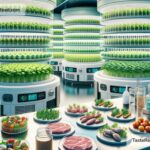The Future of Food: Global Innovation for a Better World
Food is not just what we eat; it is the fuel we need to live, work, and thrive. But in today’s world, millions of people face hunger while others waste tons of food every day. Climate change, population growth, and resource depletion are pushing us to rethink how we produce and share food. The future of food depends on innovative ideas and global collaboration to create systems that are fair, sustainable, and resilient.
Challenges Facing Our Food System
The global food system is cracked but not yet broken. Around 828 million people go hungry every year, while one-third of all food produced is wasted. Farmers face challenges due to unpredictable weather caused by climate change, and crops are increasingly affected by floods, droughts, pests, and diseases. At the same time, as the global population grows to an estimated 10 billion by 2050, we need to produce more food with fewer resources.
Land is becoming scarce, water supplies are shrinking, and biodiversity is declining. Current farming practices often overuse chemicals, harm the soil, and pollute the environment. These trends put immense pressure on farmers, food producers, and policymakers to find smarter ways to make and deliver food.
Innovations That Could Change Everything
Around the world, scientists, engineers, and farmers are working together to create new solutions for these problems. Let’s take a look at some of the most exciting innovations shaping the future of food:
1. Vertical Farming
Imagine growing lettuce not in fields but inside tall towers filled with lights and water systems. Vertical farming uses layers of crops that grow indoors. It doesn’t require soil and often uses 90% less water than traditional farms. By farming indoors, we can grow food closer to cities, reduce transportation costs, and cut down pollution.
2. Lab-Grown Meat
As demand for meat increases, raising billions of animals for food creates environmental challenges. Lab-grown meat, also called “cultured meat,” is made without animals—scientists grow real meat from animal cells in a lab. This method uses fewer resources, creates less waste, and could help prevent deforestation.
3. Plant-Based Alternatives
From burgers made of beans to protein drinks packed with algae, plant-based foods are gaining popularity. These products replicate the taste and texture of meat but have a much lower environmental impact. Companies are even experimenting with foods made from insects, which are nutritious and require far fewer resources than traditional livestock.
4. Precision Agriculture
New technology like drones and sensors helps farmers monitor their crops with incredible accuracy. Precision agriculture uses data to guide decisions about planting, watering, and harvesting. With this technology, farmers can reduce waste and maximize yield, which is critical for feeding more people without depleting the earth’s resources.
5. Blockchain in Food Distribution
Blockchain, the technology behind cryptocurrencies, is being used to improve food supply chains. It can track how food moves from farms to stores, ensuring safety and reducing waste. For example, if there’s a disease outbreak linked to spinach, blockchain can quickly identify where it was grown and recall batches without disrupting the entire food system.
6. Genetically Modified Organisms (GMOs)
Scientists are engineering crops to be more resistant to pests, heat, and disease. These GMOs could help farmers grow food in extreme weather conditions and in areas with poor soil. While GMOs have sparked debate, they hold promise for improving global food security if used responsibly.
Collaboration Across Borders
While these innovations are exciting, we cannot solve the food crisis with technology alone. Global collaboration is key. Governments, companies, and communities must work together to ensure these innovations are accessible to everyone, especially in developing countries.
International organizations like the United Nations are leading initiatives to address hunger and unsustainable farming practices. For example, the UN’s Sustainable Development Goals include “Zero Hunger” and “Responsible Consumption and Production.” These goals encourage nations to reduce food waste, support small farmers, and adopt environmentally friendly practices.
The Role of Education and Consumer Behavior
To build a better food future, people everywhere need to rethink their habits. Education plays a big role in teaching consumers how their food choices affect the planet. Eating less meat, reducing food waste, and buying locally grown produce can make a big difference.
Governments and businesses can also help by offering incentives for sustainable farming practices, funding research for food innovations, and creating policies that support fair trade.
A Hopeful Outlook
While the food system faces urgent challenges, there is hope. Humans are remarkably creative, and history has shown that innovation can overcome even the toughest problems. With breakthroughs in technology, science, and global cooperation, the future of food could be bright, abundant, and sustainable.
Imagine a world where no one goes hungry, farming doesn’t harm the environment, and people of every country have access to nutritious food. It will take hard work, major investments, and a global effort, but the goal is achievable.
The future of food is not just about feeding people—it’s about building a system that supports human health, preserves the planet, and promotes fairness for all. Together, we can innovate for a better tomorrow.
So, the next time you sit down for a meal, consider the idea that every bite you take is connected to a global story of innovation, collaboration, and hope. The future of food starts with all of us.


